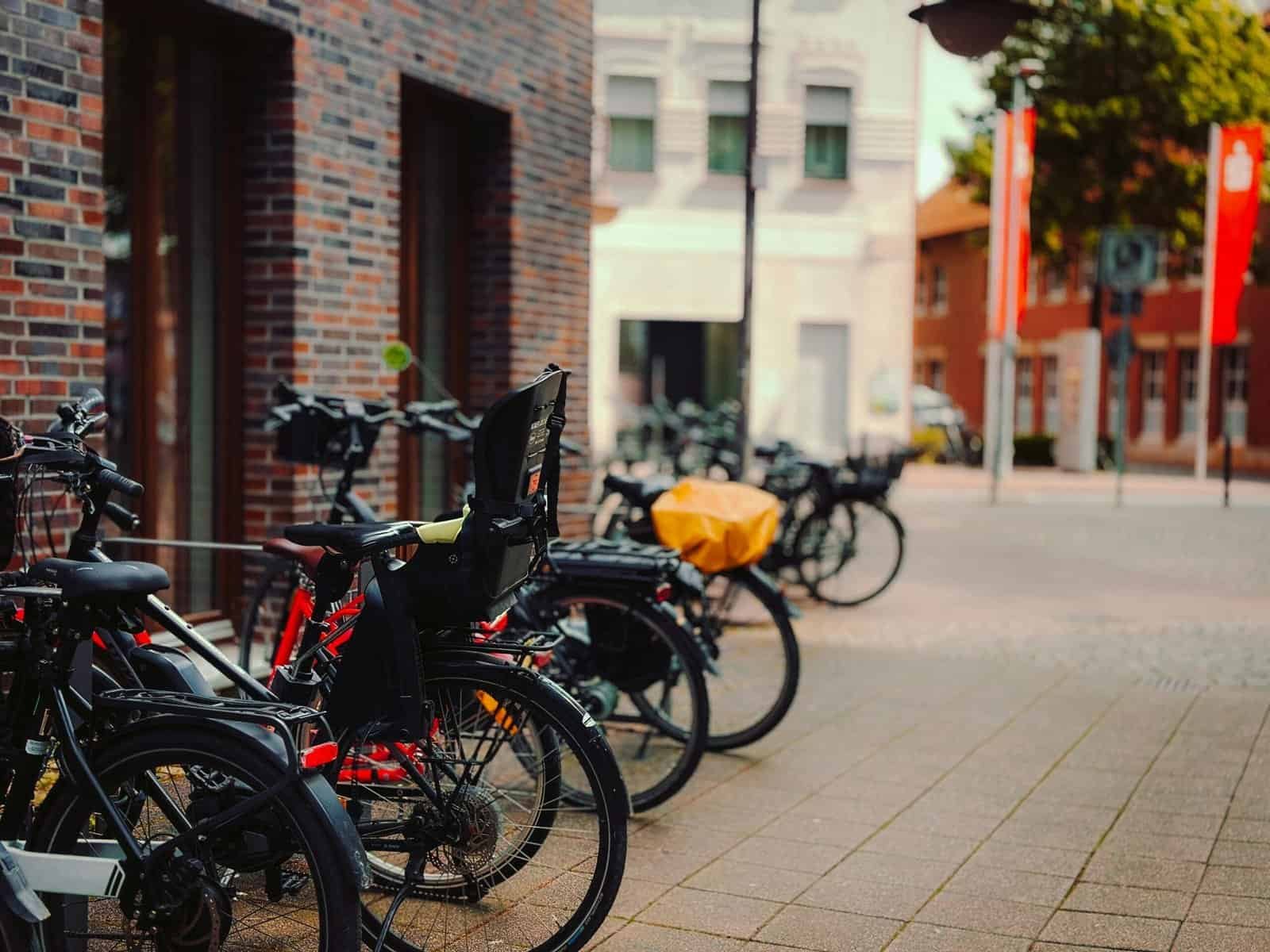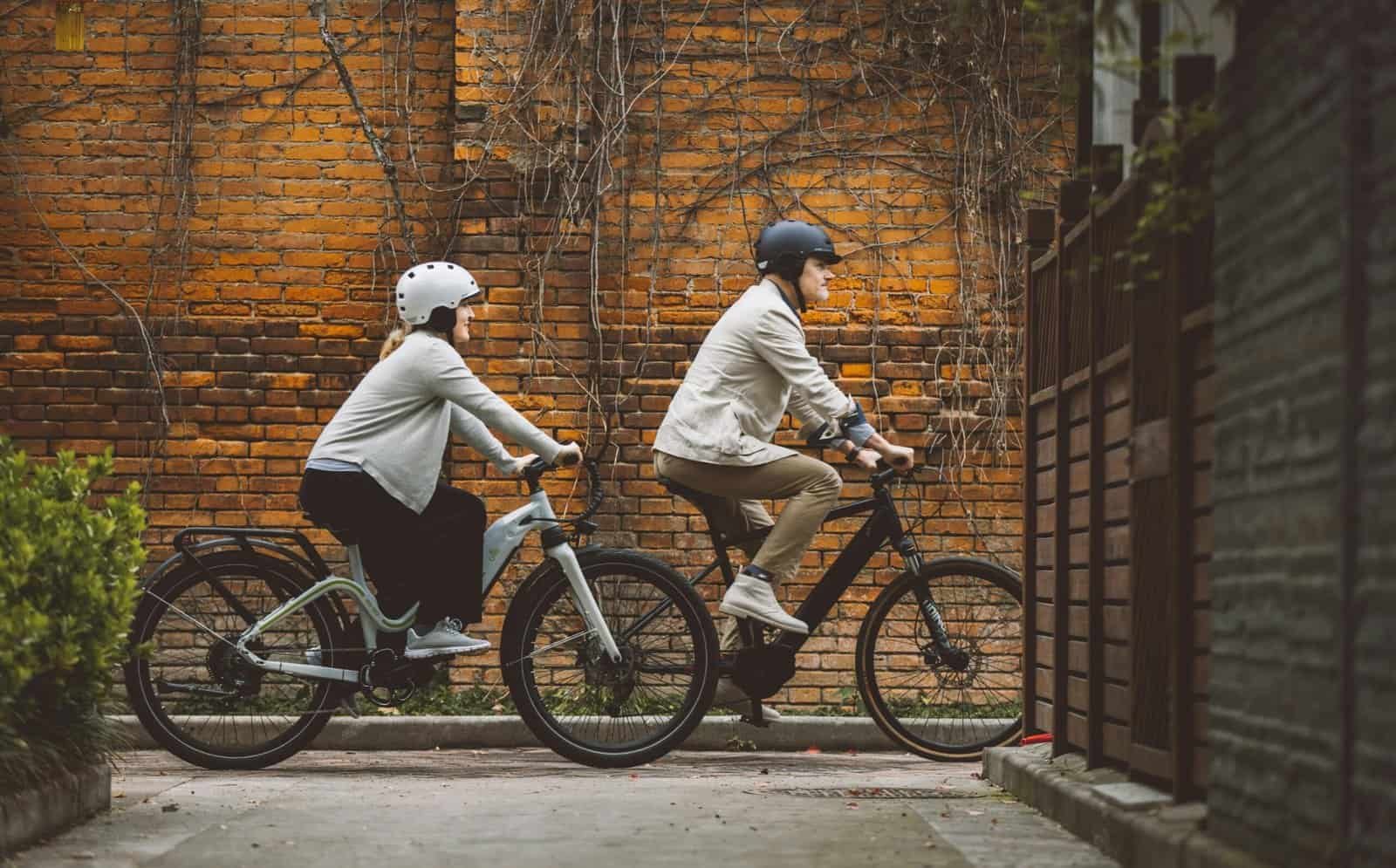Navigating through bustling city streets can be a challenge, whether you’re on a traditional bike or an e-bike. In the article “How Do Electric Bikes Handle In Traffic Compared To Traditional Bikes?,” you’ll discover the unique advantages e-bikes offer in heavy traffic, such as quicker acceleration and the ability to maintain a consistent speed with less effort. You’ll also learn about the common misconceptions and the practical differences that make electric bikes a fascinating alternative for urban commuters. By the end, you’ll have a clear picture of how each bike type shapes the commuting experience and which might suit your lifestyle better. Have you ever found yourself wondering how electric bikes handle in traffic compared to traditional bikes? If so, you’re not alone. As cities become more congested and the push for eco-friendly transportation grows stronger, many of us are pondering the advantages of e-bikes over their traditional counterparts. Let’s dive into the gritty, day-to-day realities of navigating traffic on these two types of bicycles.
The Basics: Electric Bikes vs. Traditional Bikes
Before we compare performance in traffic, it’s essential to understand the basic differences between electric bikes (e-bikes) and traditional bikes.
What is an Electric Bike?
An electric bike, or e-bike, is a bicycle equipped with an electric motor that assists with pedaling. While you can pedal a traditional bike all on your own, an e-bike gives you that extra push, making it easier to ride long distances, up hills, and through heavy traffic.
What is a Traditional Bike?
A traditional bike relies solely on human power to move. Made of lighter materials, these bikes can be more straightforward in terms of mechanics and maintenance, but they demand more physical effort from the rider.
Acceleration and Speed
One of the first things you’ll notice when comparing an e-bike to a traditional bike in traffic is the difference in acceleration and speed.
Electric Bikes
E-bikes typically offer faster acceleration thanks to their electric motors. This can be particularly advantageous when you’re trying to move quickly from a standstill, like at traffic lights or stop signs.
- Smooth Starts: Most e-bikes have different assist levels, allowing you to control how quickly you accelerate.
- Higher Average Speeds: E-bikes often maintain higher average speeds, helping you keep pace with slower-moving cars and reducing the overall time spent in traffic.
Traditional Bikes
Traditional bikes depend entirely on your leg power, which can be a drawback in stop-and-go traffic.
- Slower Starts: You need to pedal hard to get moving, which can take longer to reach a comfortable cruising speed.
- Lower Average Speeds: While you can pedal hard to accelerate, it requires more effort and can be tiring over long commutes or in heavy traffic situations.
| Feature | Electric Bikes | Traditional Bikes |
|---|---|---|
| Acceleration | Fast, motor-assisted | Slow, pedal-dependent |
| Average Speed | Higher, consistent | Lower, variable |

Maneuverability
How well you navigate through traffic can significantly affect your commute’s efficiency and safety.
Electric Bikes
Thanks to their robust build and motor assistance, e-bikes handle well in traffic.
- Agility: Modern e-bikes are designed to be agile, allowing you to weave through traffic smoothly.
- Stability: The added weight from the motor and battery can make them more stable but potentially less nimble.
- Balance: E-bikes often come with improved braking systems for better control.
Traditional Bikes
Traditional bikes are typically lighter and may offer greater maneuverability.
- Nimble: Easier to weave through gaps and smaller spaces.
- Lightweight: Easier to carry up stairs or lift over obstacles.
- Reactive Braking: Dependable but can require more hand strength.
| Feature | Electric Bikes | Traditional Bikes |
|---|---|---|
| Agility | Moderate to High | High |
| Stability | High | Moderate |
| Balance | Excellent | Good |
Safety Considerations
Safety is a critical factor when riding in traffic. Here, we’ll break down how each type of bike stacks up.
Electric Bikes
E-bikes offer certain safety advantages.
- Brake Systems: Many e-bikes are equipped with advanced hydraulic brakes for better stopping power.
- Visibility: Integrated lights improve visibility to other motorists.
- Speed Control: Speed limiting settings help avoid riding too fast.
Traditional Bikes
While traditional bikes may lack some of the advanced features, they are still safe options.
- Mechanical Brakes: Reliable but may require more maintenance.
- Lighting: Must install aftermarket lights for better visibility.
- Speed Control: Fully dependent on the rider’s pedaling effort.
| Feature | Electric Bikes | Traditional Bikes |
|---|---|---|
| Brake Systems | Advanced hydraulic or disc brakes | Mechanical, rim brakes |
| Visibility | Integrated lights available | Aftermarket installations |
| Speed Control | Speed settings and motor limits | Rider-dependent |

Range and Endurance
Range and endurance can impact how often you need to stop and charge or refuel, making them essential factors in traffic situations.
Electric Bikes
One of the main drawbacks of e-bikes is their dependence on battery power.
- Range: Most e-bikes offer ranges between 20 to 70 miles, depending on the battery and usage.
- Charging: Battery charging can take several hours.
- Backup Plan: When the battery dies, you can still pedal, but it becomes harder due to the bike’s added weight.
Traditional Bikes
Traditional bikes have the advantage of not requiring a battery.
- Range: Unlimited range, as long as you can keep pedaling.
- Refueling: No need to stop and recharge; you just need some snacks and water.
- Consistent Performance: No decline in performance over time, as long as you maintain your fitness.
| Feature | Electric Bikes | Traditional Bikes |
|---|---|---|
| Range | 20-70 miles, battery-dependent | Unlimited |
| Charging | Requires several hours | No need |
| Backup Plan | Manual pedaling, harder with dead battery | Always pedal-powered |
Cost and Maintenance
Evaluating cost and maintenance will help you decide which bike is better suited for your needs.
Electric Bikes
E-bikes tend to be more expensive and require more maintenance.
- Initial Cost: Higher due to the motor and battery.
- Maintenance: Requires specialized knowledge and components for the motor and battery.
- Longevity: Batteries need to be replaced every few years, adding to long-term costs.
Traditional Bikes
Traditional bikes are generally more affordable and easier to maintain.
- Initial Cost: Lower initial investment.
- Maintenance: Can often be done at home or at any bike shop.
- Longevity: With proper care, traditional bikes can last for decades without major component replacements.
| Feature | Electric Bikes | Traditional Bikes |
|---|---|---|
| Initial Cost | High due to motor and battery | Lower |
| Maintenance | Specialized, more frequent | Easier, less frequent |
| Longevity | Battery needs replacing over time | Can last decades |

Environmental Impact
The environmental impact of your bike can also be a consideration, especially if you’re looking to reduce your carbon footprint.
Electric Bikes
E-bikes are generally seen as green alternatives, but they come with caveats.
- Production Impact: Manufacturing e-bikes, particularly batteries, generates a significant carbon footprint.
- Battery Disposal: Proper disposal and recycling of used batteries are crucial.
- Energy Use: Even though they use electricity, e-bikes are far more energy-efficient than cars.
Traditional Bikes
Traditional bikes are the champions of eco-friendly transport.
- Production Impact: Producing a traditional bike has a lower carbon footprint.
- No Battery Waste: No need for battery disposal or recycling.
- Human Powered: Zero emissions and almost no energy consumption apart from your calorie intake.
| Feature | Electric Bikes | Traditional Bikes |
|---|---|---|
| Production Impact | Higher due to batteries | Lower |
| Battery Disposal | Needs proper recycling | Not applicable |
| Energy Use | Low, but uses electricity | Zero emissions |
Commuter Experience
Countless factors come together to shape your overall commuting experience. Let’s look at how e-bikes and traditional bikes stack up in terms of comfort, convenience, and overall user satisfaction.
Electric Bikes
E-bikes offer a more relaxed and less sweaty commute.
- Comfort: E-bikes are generally built for comfort, with features such as cushioned seats and ergonomic handlebars.
- Convenience: Less physical exertion means you can arrive at your destination fresh and without the need for a change of clothes.
- Commute Time: Often shorter due to higher speeds and faster acceleration.
Traditional Bikes
Traditional bikes may require more effort but offer their own set of benefits.
- Fitness: Provides a good workout, contributing to your overall physical fitness.
- Simplicity: No need to worry about battery levels or charging.
- Satisfaction: Many riders find joy in the pure, unassisted experience of cycling.
| Feature | Electric Bikes | Traditional Bikes |
|---|---|---|
| Comfort | High | Moderate |
| Convenience | Very high | Moderate |
| Commute Time | Shorter | Longer |
| Fitness | Moderate | High |

Legal Considerations
Legal regulations can vary significantly between e-bikes and traditional bikes.
Electric Bikes
E-bikes often come with specific legal regulations.
- Speed Limits: Many jurisdictions set speed limits for e-bikes, typically around 20-28 mph.
- Licensing and Insurance: Some regions may require a special license or insurance for certain powerful e-bikes.
- Best Practice: Always check local laws to ensure compliance.
Traditional Bikes
Traditional bikes are generally subject to fewer regulations.
- Speed Limits: No specific speed limits beyond general traffic laws.
- Licensing and Insurance: Usually, no special licensing or insurance is required.
- Best Practice: Familiarize yourself with local bike laws and safety guidelines.
| Feature | Electric Bikes | Traditional Bikes |
|---|---|---|
| Speed Limits | Typically 20-28 mph | No specific limits |
| Licensing | May require in some regions | Not required |
| Insurance | May require in some regions | Not required |
Social Perception
How others perceive your choice of transportation might be a factor for you.
Electric Bikes
E-bikes often generate curiosity and positive attention.
- Innovative Image: Seen as a modern, tech-savvy choice.
- Eco-Friendly Reputation: Recognized for contributing to sustainable transportation.
- Mixed Reactions: Some purists may argue it’s ‘cheating,’ but the general sentiment is positive.
Traditional Bikes
Traditional bikes have stood the test of time and are well-accepted.
- Classic Appeal: Viewed as a timeless mode of transportation.
- Fitness Oriented: Often admired for promoting a healthy lifestyle.
- Widely Accepted: Seen as a staple of urban and rural commuting alike.
| Aspect | Electric Bikes | Traditional Bikes |
|---|---|---|
| Innovative Image | Modern, tech-savvy | Classic, timeless |
| Eco-Friendly Reputation | Positive, recognized for sustainability | Admired for zero emissions |
| Social Acceptance | Mostly positive, some purist pushback | Universally well-received |
Long-Distance Commutes
If you have a longer commute, the type of bike you choose can make a big difference.
Electric Bikes
E-bikes are highly suited for longer commutes.
- Range: With higher-end models offering substantial range, you can cover longer distances without breaking a sweat.
- Endurance: Motor assistance reduces fatigue, making long rides more feasible.
- Speed: Faster overall speeds can shave significant time off your commute.
Traditional Bikes
Long commutes on a traditional bike present a different set of challenges.
- Physical Demand: Requires a greater level of fitness and stamina.
- Time Consumption: Slower speeds mean longer travel times.
- Preparation: Need to carry tools and supplies for potential mechanical issues.
| Feature | Electric Bikes | Traditional Bikes |
|---|---|---|
| Suitability | Highly suitable for long distances | More challenging |
| Physical Demand | Lower due to motor assistance | High |
| Time Consumption | Less due to higher speeds | More due to lower speeds |
| Preparation | Less demanding | More demanding |
Urban vs. Rural Riding
The environment in which you ride can also affect your choice between an e-bike and a traditional bike.
Urban Environments
Electric Bikes:
- Traffic Handling: Better for quick acceleration and maintaining pace with cars.
- Convenience: Integrated tech features like GPS and phone mounts make navigating busy streets easier.
- Storage: Often come with built-in or easily attachable storage options like baskets and panniers.
Traditional Bikes:
- Maneuverability: Their lighter frame makes navigating tight urban spaces easier.
- Low Cost: Ideal for short commutes without the need for significant investment.
- Simplicity: Less hassle with charging and more straightforward storage solutions.
Rural Environments
Electric Bikes:
- Range and Terrain: Motor assistance helps tackle long distances and hilly terrain effortlessly.
- Durability: Many e-bikes are designed to handle rougher conditions.
- Utility: Often come with additional features like racks for carrying gear.
Traditional Bikes:
- Versatility: Easier to repair on the go if something goes wrong.
- Fitness: Riding in variable terrain can be a great workout.
- Cost-Efficiency: Less expensive and good for mixed-surface riding.
| Environment | Feature | Electric Bikes | Traditional Bikes |
|---|---|---|---|
| Urban | Traffic Handling | Excellent | Good |
| Convenience | High | Moderate | |
| Storage | Integrated options | Simple add-ons | |
| Rural | Range and Terrain | Excellent with motor aid | Versatile |
| Durability | Designed for rough conditions | Good | |
| Utility | High with additional features | Practical |
Fitness and Health Benefits
Your fitness goals can also influence your choice of bike.
Electric Bikes
While e-bikes provide some health benefits, they vary depending on how much you rely on the motor.
- Moderate Exercise: Helps with cardiovascular health without overexerting yourself.
- Reduced Stress: The assist feature makes riding less physically demanding, reducing overall stress.
- Accessibility: Makes cycling accessible to those who might struggle with traditional bikes due to age or physical limitations.
Traditional Bikes
Traditional bikes are excellent for those looking to improve their fitness.
- Intense Workout: Provides a full-body workout, particularly benefiting cardiovascular health and leg muscles.
- Weight Loss: The more demanding ride can contribute significantly to weight loss efforts.
- Endurance Building: Great for building stamina and overall physical strength.
| Feature | Electric Bikes | Traditional Bikes |
|---|---|---|
| Exercise | Moderate | Intense |
| Stress Levels | Reduced due to assist | Higher, depending on fitness |
| Accessibility | Suitable for more individuals | Requires good fitness levels |
| Weight Loss | Moderate benefits | Significant benefits |
| Endurance Building | Moderate | High |
Customization and Personalization
Your ability to customize and personalize your bike can also impact your choice.
Electric Bikes
E-bikes offer a range of features that can be tailored to your needs.
- Tech Features: GPS, custom speed settings, and integrated lighting systems.
- Comfort Upgrades: Options for better seats, suspension systems, and ergonomic handlebars.
- Performance Tweaks: Software updates can often improve performance and efficiency.
Traditional Bikes
Traditional bikes offer extensive customization possibilities.
- Component Swaps: Easily replace wheels, saddles, handlebars, and more.
- Frame Customization: Paint, decals, and other personal touches.
- Accessory Options: Wide range of aftermarket products, from panniers to lights.
| Feature | Electric Bikes | Traditional Bikes |
|---|---|---|
| Tech Features | High, with GPS and monitors | Low, minimal tech |
| Comfort Upgrades | Numerous, including seats and suspension | High, replaceable components |
| Performance Tweaks | Software updates | Replaceable mechanical parts |
| Personal Touches | Moderate | Extensive |
Final Thoughts: Making the Choice
Deciding between an electric bike and a traditional bike involves weighing multiple factors and considering your personal needs and lifestyle.
Why Choose an Electric Bike?
- Efficiency in Traffic: Faster acceleration and higher average speeds make e-bikes highly effective in urban traffic.
- Ease of Use: Motor assistance makes commutes less tiring, allowing you to arrive fresh and ready.
- Good for Long Commutes: High ranges and reduced physical exertion make it suitable for long-distance travel.
- Accessibility: Ideal for those with physical limitations or those looking for a less intense cycling experience.
Why Choose a Traditional Bike?
- Cost-Effective: Lower initial investment and maintenance costs.
- Fitness Benefits: Offers a robust workout, building strength and endurance.
- Simplicity and Reliability: Less to worry about—no batteries to charge, fewer parts to maintain.
- Versatility: Easy to customize and repair, fitting a wide range of personal preferences.
Ultimately, the choice between an electric bike and a traditional bike boils down to what you prioritize—be it speed and convenience, or fitness and simplicity. Whether you’re dodging traffic in a bustling city or coasting along rural landscapes, both options offer unique benefits that can enhance your commuting experience. Choose the one that aligns best with your lifestyle and enjoy the ride!

